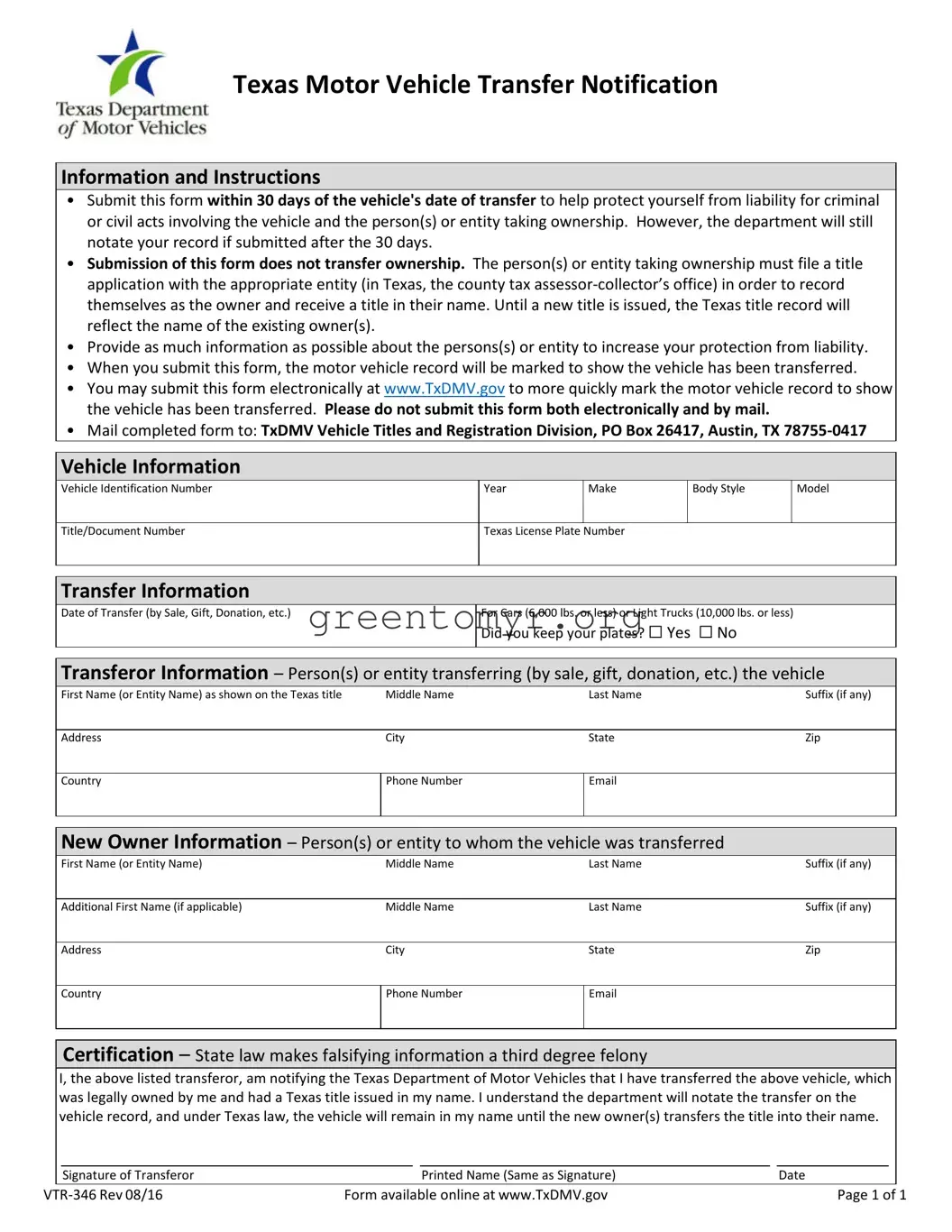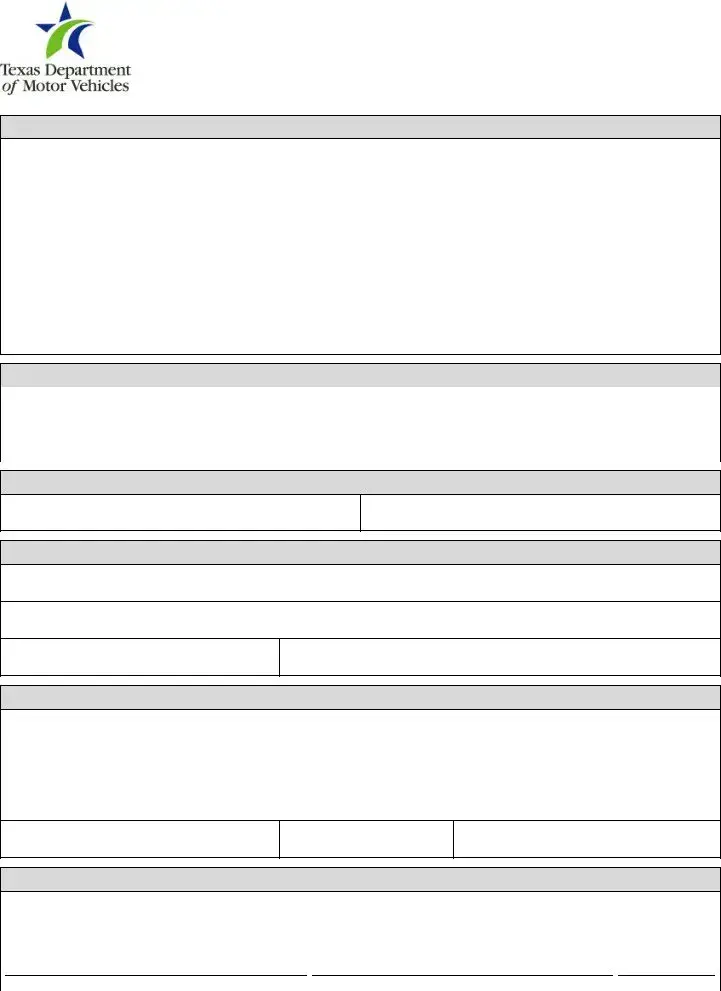The BOS VTR-346 form is a document used in specific transactions related to vehicle titles in certain jurisdictions. This form helps facilitate the transfer of ownership for vehicles and serves to provide critical information regarding the vehicle's history and status. Users typically complete this form when buying or selling vehicles.
Any individual or entity involved in a transaction requiring the transfer of vehicle ownership may need to complete the BOS VTR-346 form. This includes private sellers and buyers, dealerships, and sometimes even financial institutions when vehicles are financed or leased.
You can typically obtain the BOS VTR-346 form from your state’s Department of Motor Vehicles (DMV) or its equivalent. Many jurisdictions also provide digital access through their official websites, allowing for easy downloads and printing.
The BOS VTR-346 form usually requires several pieces of essential information, including:
-
Vehicle identification number (VIN)
-
Make, model, and year of the vehicle
-
The names and addresses of both the seller and buyer
-
The date of the transaction
-
Signatures of both parties involved
Whether or not the BOS VTR-346 form needs to be notarized may depend on your jurisdiction. Some states require notarization to ensure the authenticity of the signatures, while others do not. It's advisable to check local regulations or consult with your DMV to know the requirements.
After completing the BOS VTR-346 form, submission procedures can vary based on local regulations. In many cases, you would submit the form to your state’s DMV either in person or by mail. Alternatively, some jurisdictions may allow submission through an online portal.
There might be fees associated with processing the BOS VTR-346 form. These fees vary by state and can depend on several factors, such as whether you are applying for a new title or transferring an existing one. Typically, a fee schedule can be found on the DMV's website.
If you make a mistake on the BOS VTR-346 form, it's crucial to correct it promptly. Depending on the nature of the error, you may need to fill out a new form entirely. Some jurisdictions may allow small corrections, but significant mistakes often require starting over. Always double-check your information before submission to avoid issues.
Yes, the BOS VTR-346 form plays a critical role in the context of vehicle insurance. Insurance companies usually require proof of ownership, which this form helps establish. It ensures that the new owner can enroll in insurance policies without complications.

